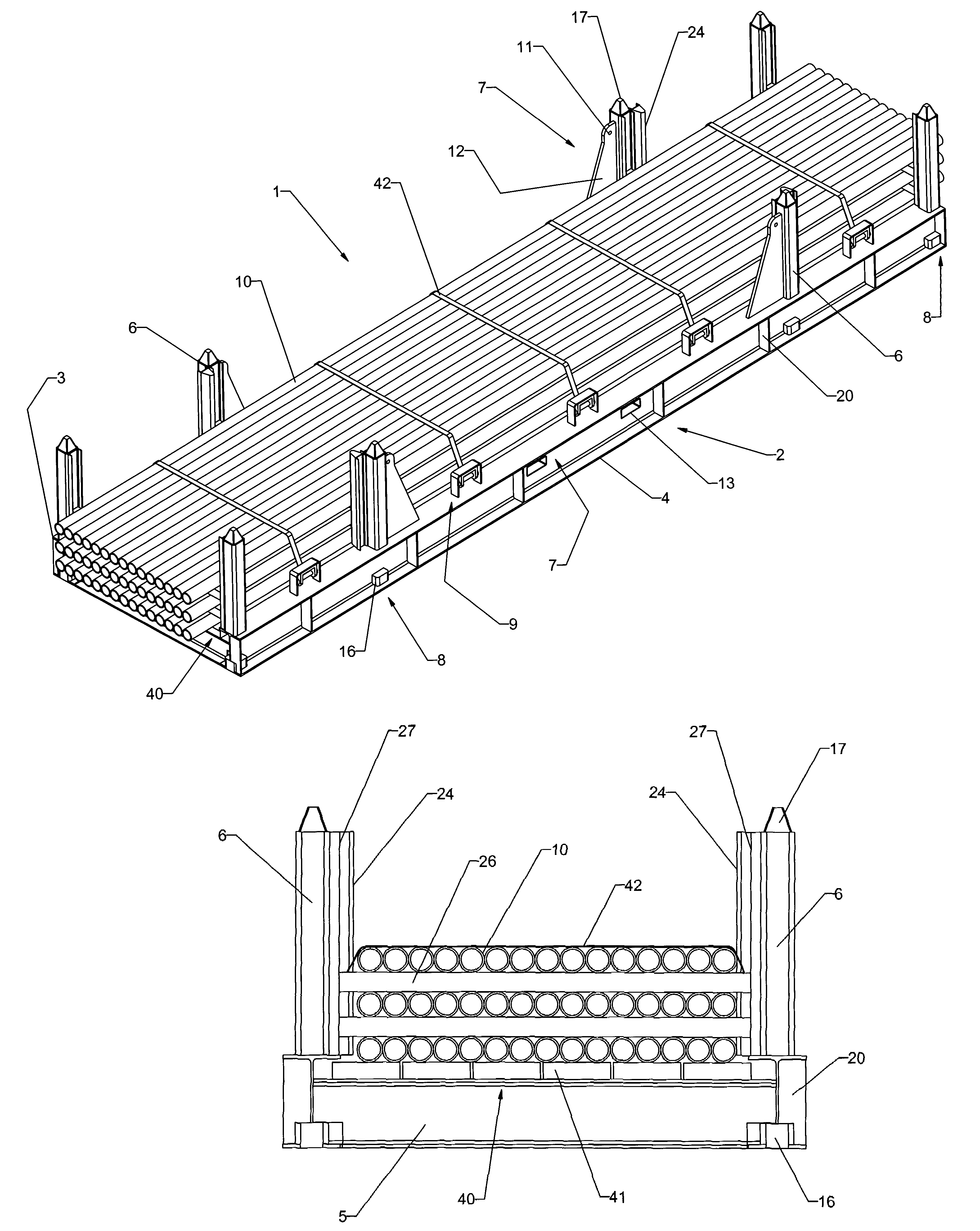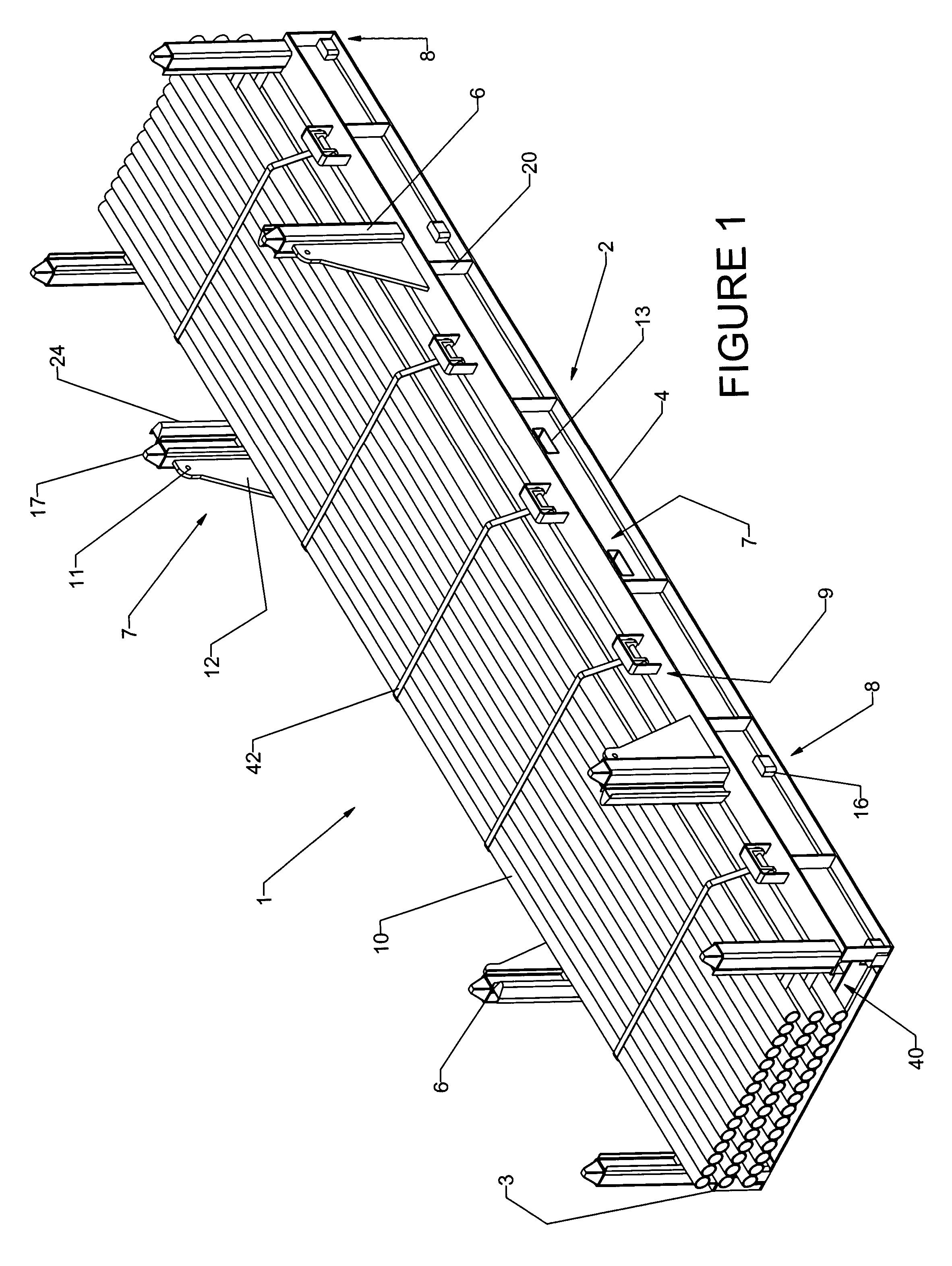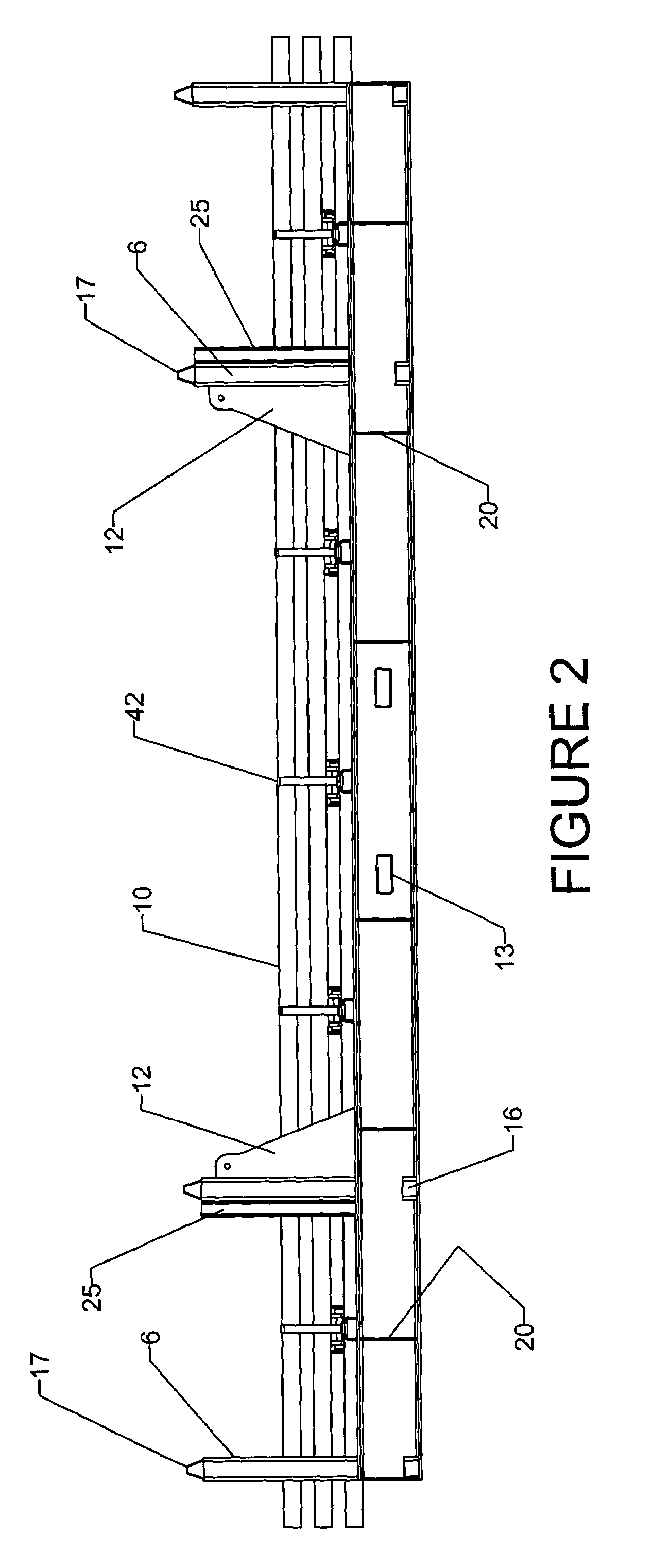Multilength tubular transporter
a transporter and multi-tube technology, applied in the directions of transportation and packaging, load securing, transportation items, etc., can solve the problems of slow process, inability to use the deck of the ship for anything, and the manual handling process can take quite a long time, so as to improve the payload capacity and facilitate the lifting
- Summary
- Abstract
- Description
- Claims
- Application Information
AI Technical Summary
Benefits of technology
Problems solved by technology
Method used
Image
Examples
Embodiment Construction
[0031]Unless otherwise noted herein, all construction materials are preferably steel, and all attachments between such components are achieved by welding. Such materials and methods are intended to impart a maximum level of strength and structural rigidity, while keeping the transporter as lightweight and easy to maneuver as possible. Certain features which are used in assembling or operating the invention, but which are known to those of ordinary skill in the art and not bearing upon points of novelty, such as screws, bolts, nuts, welds, and other common fasteners, may not be shown for clarity.
[0032]Turning now to the figures, a multilength tubular transporter 1 is illustrated in FIG. 1 in a loaded condition as being generally comprised of a base frame 2, including at least two main beams 3,4 which are connected by a plurality of cross members 5. Each cross member 5 is preferably constructed from steel I-beams, such as a W12×45 wide flange I-beam, to achieve the desired structural ...
PUM
 Login to View More
Login to View More Abstract
Description
Claims
Application Information
 Login to View More
Login to View More - R&D
- Intellectual Property
- Life Sciences
- Materials
- Tech Scout
- Unparalleled Data Quality
- Higher Quality Content
- 60% Fewer Hallucinations
Browse by: Latest US Patents, China's latest patents, Technical Efficacy Thesaurus, Application Domain, Technology Topic, Popular Technical Reports.
© 2025 PatSnap. All rights reserved.Legal|Privacy policy|Modern Slavery Act Transparency Statement|Sitemap|About US| Contact US: help@patsnap.com



